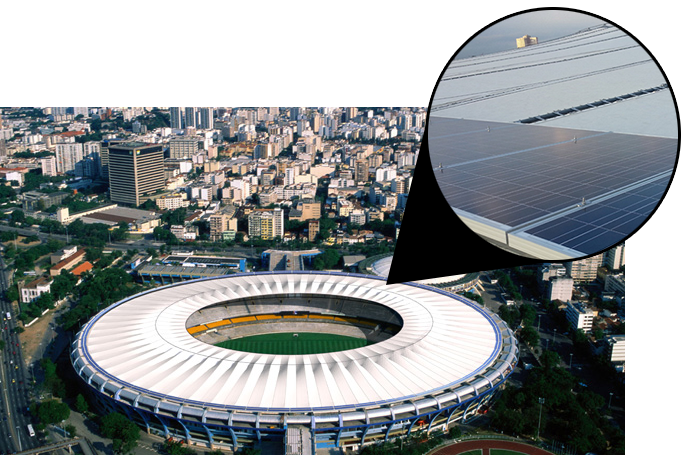The photo shows the Maracanã Stadium’s solar installation.
For the first time, the FIFA World Cup final in Brazil yesterday was powered by the sun. Solar panels have been installed on both the Arena Pernambuco and the famous Estádio do Maracanã by Yingli Solar, the world’s largest solar panel manufacturer and a FIFA World Cup Sponsor. The solar panels are expected to generate more than 1MW per year of clean electricity.
FIFA say these solar projects represents their commitment to sustainability as well as a way to reduce the environmental impact of its own operations. “Sustainability is one of the key tenants in our vision for the 2014 FIFA World Cup,” said Federico Addiechi, FIFA’s Head of Corporate Social Responsibility. “We hope this landmark project will be the catalyst to increase the production and use of renewable energy in the country.”
FIFA and Yingli has installed 1500 solar panels on the Estádio do Maracanã, one of football’s most iconic venues and South America’s largest stadium. The solar panels will generate over 550MWh of clean electricity which can power an estimated 240 homes annually. The solar panels will prevent the release of about 350 tons of carbon dioxide into the atmosphere each year, similar to the impact of planting 14,000 trees.
The Arena Pernambuco, home to five matches of the FIFA World Cup, was powered by a much bigger solar installation. The plant - located in São Lourenço de Mata, a suburb of Recife, the regional capital of the Brazilian state of Pernambuco - uses more than 3650 high-efficiency panels to generate about 1,500MWh of clean electricity each year. The solar power generated could power 600 average homes and is expected to offset about 800 tons of carbon dioxide each year, similar to the impact of planting 35,000 trees. It’s also the first solar power plant in Pernambuco.


Recommended Comments
Join the conversation
You can post now and register later. If you have an account, sign in now to post with your account.